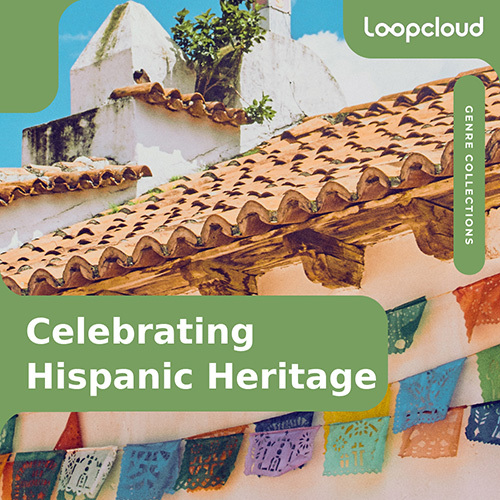Blog
Celebrating Hispanic Heritage Month
22 Sep '2023
Celebrate National Hispanic Heritage Month with us as we delve into this curated collection - immerse yourself in the rhythms & melodies that have shaped today's musical culture.
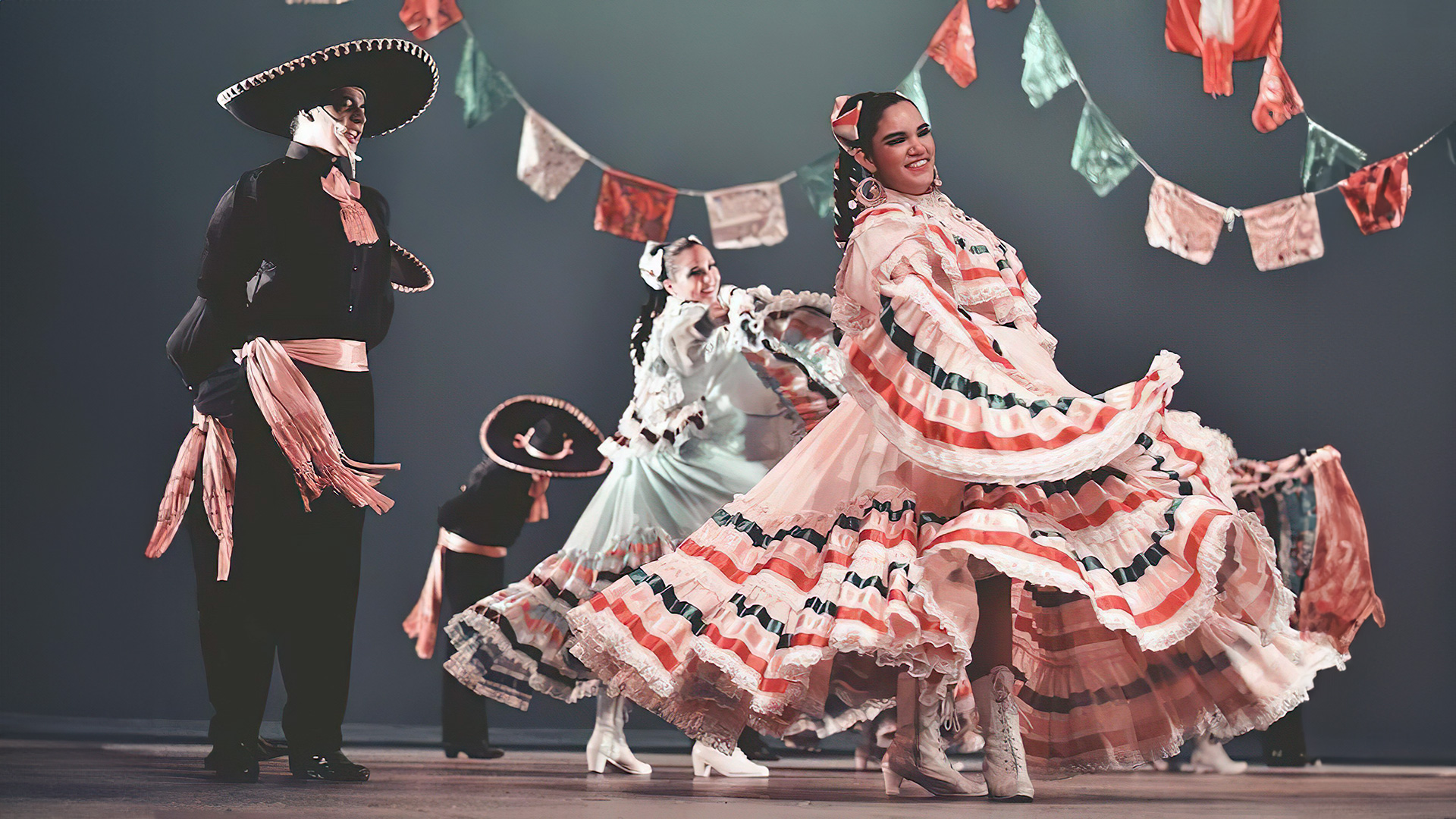
For thirty consecutive days starting in mid-September, National Hispanic Heritage Month is celebrated in the United States. With 63.7 million U.S. citizens who claim Hispanic roots, and an even larger number making up the global diaspora, this month-long celebration provides an opportunity to acknowledge the cultures, achievements, and contributions of Hispanic people.
Hispanic and Latinx culture has a reputation for being rich and vibrant, and nowhere is this more evident than in the various styles of music originating from Spanish-speaking countries. Whether you’re listening to modern genres like reggaeton; older Latin American genres like salsa, merengue or rancheras; or taking it all the way back to the traditional flamenco and folk music of Spain, you’re guaranteed to find a proud and distinct sonic signature.
At Loopcloud, we’ve decided to pay homage to Hispanic musical heritage by releasing a specially curated 'Celebrating Hispanic Heritage' Collection of sounds that dig into its unique instrumentation and grooves. Inside, you’ll find 100 sounds that will help you add that unmistakable Latin flair to your productions, hand picked from sizzling sample packs like Nu Cumbia, Traditional Cuban Percussion, Latin Pop Instrumentals, Flamenco Guitars and more.
Instrumentation
Hispanic music refers to a loose collection of genres that originated in Spanish-speaking countries and regions, or communities with Spanish origin or descent. As you can imagine, these genres all differ from one another in their own way, but there are some broad similarities to be found in the instrumentation used.
We’ve taken a look at the background of some popular Hispanic instruments below, showing how their individual characters lend themselves to the overall aesthetic of the music they’re used to play.
Stringed instruments
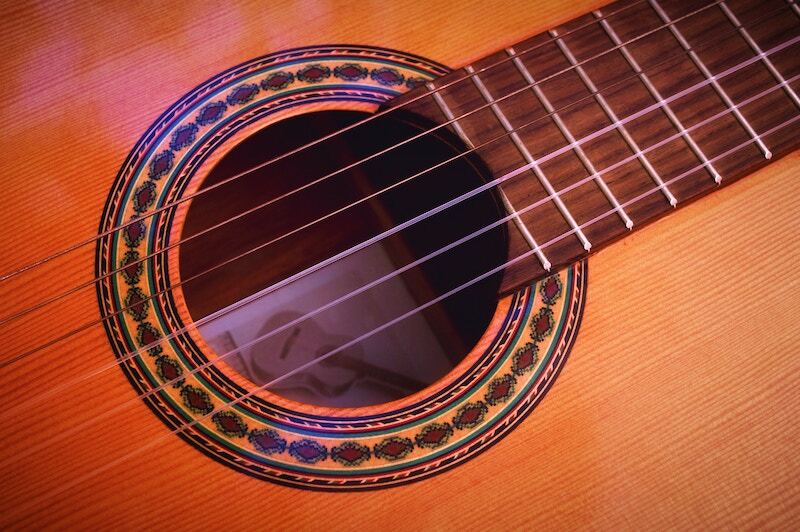
The guitar is one of the most popular instruments on the planet, and it has a long history in almost all corners of the globe. Flamenco, a passionate and emotive style of music from a region called Andalusia in southern Spain, heavily depends on the guitar, so it’s not a surprise that the instrument has had a large influence on Hispanic and Latin American music.
Spanish conquistadors brought guitars to the shores of the Americas in the 16th century, and it wasn’t long before the instrument became popular among the indigenous peoples of Central and South America. Genres like Bachata, and Lambada have noticeable guitar melodies at the forefront.
As well as the guitar, there are more niche Hispanic instruments that you’ll find across the countries and regions of Latin America. The Colombian tiple is a twelve string instrument set in four courses, with three strings per note. Played with fingernails, it has a light, silvery tone. The charango, meaning 'jolly one' is a small ukulele-sized guitar that has five double strings and is strummed very quickly. As well as the charango there’s the charangolin, a hybrid between a charango and a mandolin, tuned in fifths like a violin.
In our Celebrating Hispanic Heritage Collection you can find the smooth twang of warm nylon string acoustic guitars across 16 loops, ranging from 80 to 125 BPM. Recorded in the highest possible quality, these crystal clear samples are ready to make a stir in your productions as is, but don’t forget you can add more heat to the mix using Loopcloud’s array of creative effects and editing tools.
Percussion instruments
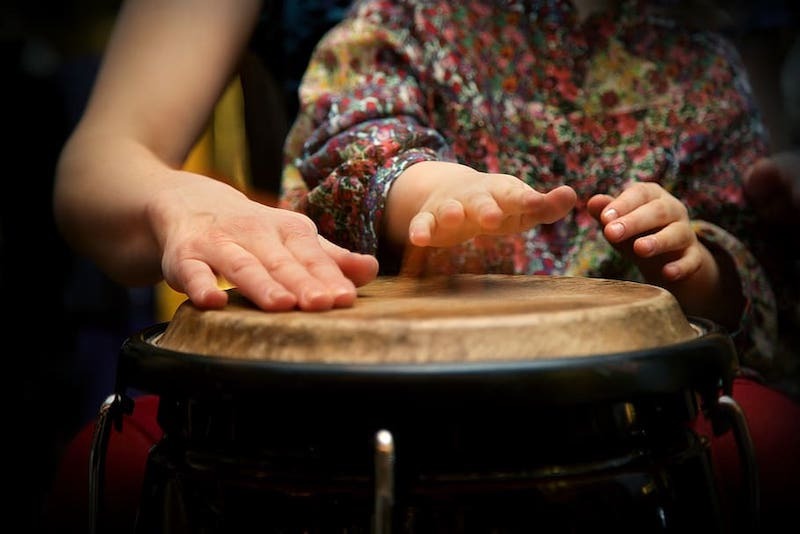
A lot of Hispanic music revolves around a strong percussive base, giving it a rhythmic identity that is often conjoined with its own dance form - for example tango and salsa music. The characterful rhythms of Hispanic music make it easy to dance to, and many songs have two- or three-beat rhythms that will get your hips moving of their own accord. Just ask Shakira!
La marimba, also known as the el tres, is a percussion instrument native to Central America, while el tres is an instrument found on Caribbean islands. It is a percussion instrument made up of a hollow piece of gourd with lines carved into it. Because of the way the wood is fractionated, the sound is produced by a pair of springs that are made of the same material on the side with the carvings. Salsa, cumbia rhythms, and Latin music are all influenced by this type of instrument.
In ancient Aztec cultures, drums occupied a special position in rituals and were considered to be sacred. Archaeological excavations have uncovered drums that carry elaborate carvings with glyphs and drawings that reveal symbolically their ritual uses and functions. In a remarkably similar way, percussive instruments served essential functions for the Mayan people too.
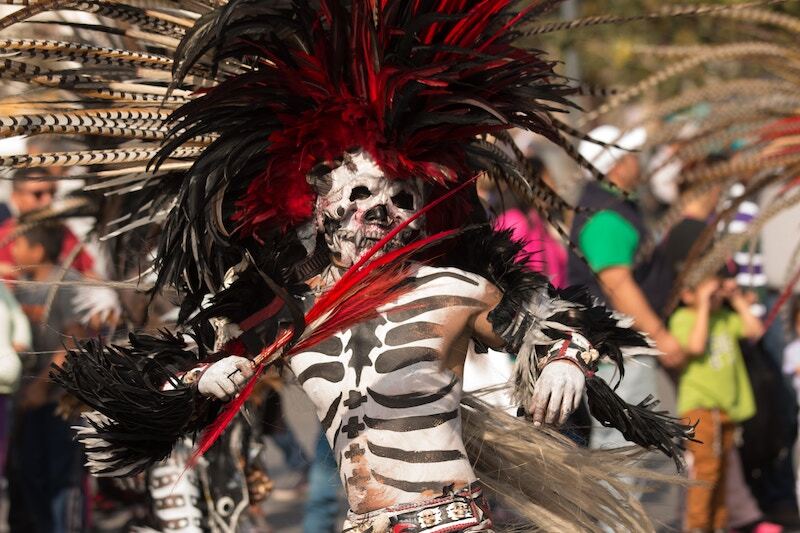
Key Influences
The seed of a musical style is rooted in the culture in which it germinates, developing from its history, society, traditions, and religions, as well as from the music of surrounding cultures. For example, Hispanic and Latin American musical styles share many cultural influences, such as those from indigenous groups like the Maya, Aztecs, and Inca; from European and Arab traditions of Spain and Portugal; and from the people of African nations, who were enslaved and brought to the Americas.
On the back of music styles like salsa, merengue, and reggaeton, which have become global music phenomena, Hispanic culture continues to contribute to the music and dance industries in the United States. A large swathe of the music that you hear on the airwaves today owes a lot to Hispanic culture. Many of the so-called founding fathers of Hip Hop in the United States were of Latin American and/or Caribbean origin, including DJ Kool Herc (Jamaican), DJ Disco Wiz (Puerto Rican and Cuban descent), Grandmaster Flash (Bajan), and Afrika Bambaataa (Jamaican and Bajan descent).
While traditional Hispanic and Latin music draws from a myriad of different influences, modern artists from Spanish-speaking countries are having a much more singular impact on the streaming era in which we currently reside. Genres like reggaeton, cumbia and Latin pop dominate the Spotify and YouTube Music Charts in Spanish-speaking countries, and in recent years they have hurtled out into the English-speaking musical universe.
Artists like Bad Bunny and Ozuna have racked up billions of plays across streaming platforms, completely subverting the narrative that only English-speaking artists in genres like hip hop, pop and rock are capable of hitting these heights. Hispanic artists bring a vibrant, infectious energy and a fervent fan base, which is why artists like Justin Bieber have collaborated with Puerto Rican stars Luis Fonsi and Daddy Yankee, and more recently Billie Eilish and Spanish singer-songwriter Rosalía.
Although there are far too many excellent Hispanic artists to mention, we’ve compiled a shortlist of three for you to check out:
Peso Pluma
Hailing from Guadalajara in Mexico, Peso Pluma swaggered onto the scene in 2020 and since then has earned widespread recognition as one of the most influential and respected artists in the Regional Mexican genre. Peso-pluma is Spanish for "lightweight" or "featherweight," but the charismatic rapper is anything but, and in March 2023 he became the most listened to artist on Spotify in Mexico. Considering the previous holder of the crown was Puerto Rican reggaeton legend Bad Bunny, that’s no mean feat!
Key track: “Ella Baila Sola”
Rosalía
Born Rosalía Vila Tobella in Sant Esteve Sesrovires, Barcelona, Rosalía is now one of those artists who you can refer to mononymously and everyone knows who you mean. Involved in flamenco since early childhood, the Spanish singer-songwriter went on to fuse the genre with electronic beats, reguetón and other modern elements. Her songs have broke ground everywhere she’s gone, with her landmark album MOTOMAMI debuting at #1 on Spotify’s Global Album Chart, a first-ever accomplishment for a Spanish artist.
Key track: “Diablo”
Luis Miguel
Puerto Rican crooner and heart-throb Luis Miguel became one of Latin music's biggest stars with his rise to success in the early '90s. Son of Spanish singer Luisito Rey, Miguel grew up on a diet of Elvis Presley and Frank Sinatra, taking key traits from both and applying his own Latin American stamp to his own career. It worked, evidently, as he went on to win nine Grammys, sell 100 million albums worldwide and become the best selling Spanish-language artist in Mexico, Argentina, Bolivia, Paraguay, Chile and Uruguay.
Key track: “La Bikina”
So, if you’re looking for new sounds to invigorate your music-making this month, look no further than the Celebrating Hispanic Heritage Collection on Loopcloud. Unlike other celebratory months, Hispanic Heritage Month begins in mid-September to commemorate the anniversaries of several Spanish-speaking countries gaining their independence, including Costa Rica, El Salvador, Guatemala, Honduras, Nicaragua, Mexico, and Chile.
This means that you’ve got until the 15th of October to join in the fiesta and get swept away by the power and passion of Hispanic sounds! Loopcloud continuously works with producers, artists, labels, DJs, and our partner brands to help curate cutting-edge sounds that can be shared with our whole global community, so keep an eye out for further Collections being released. If you want to roll up your sleeves and create your own Collections, here’s a helpful guide explaining how!
FAQs
What countries are considered Hispanic?
Hispanic refers to Spain, Mexico and most of the central and South American continent.
What is Hispanic Heritage Month and why is it celebrated?
Hispanic Heritage Month is a celebration of America's multicultural history. In this month all different cultures and nationalities celebrate the roots of their culture as well as their acceptance into American culture.
How popular is Hispanic music?
Hispanic music is huge! Within America, Spanish-language songs are now the second most listened-to in terms of musical language, accounting for 23% of the total. In 2022, revenue from Latin music clocked in at a whopping $2.2 billion.
What are some traditional Hispanic music genres?
Hispanic music is broad and fits under several collected cultures and genres. Some of the most famous are:
- Salsa
- Merengue
- Reggaeton
- Tango
- Samba
- Bossa Nova
- Ranchera
- Norteño
